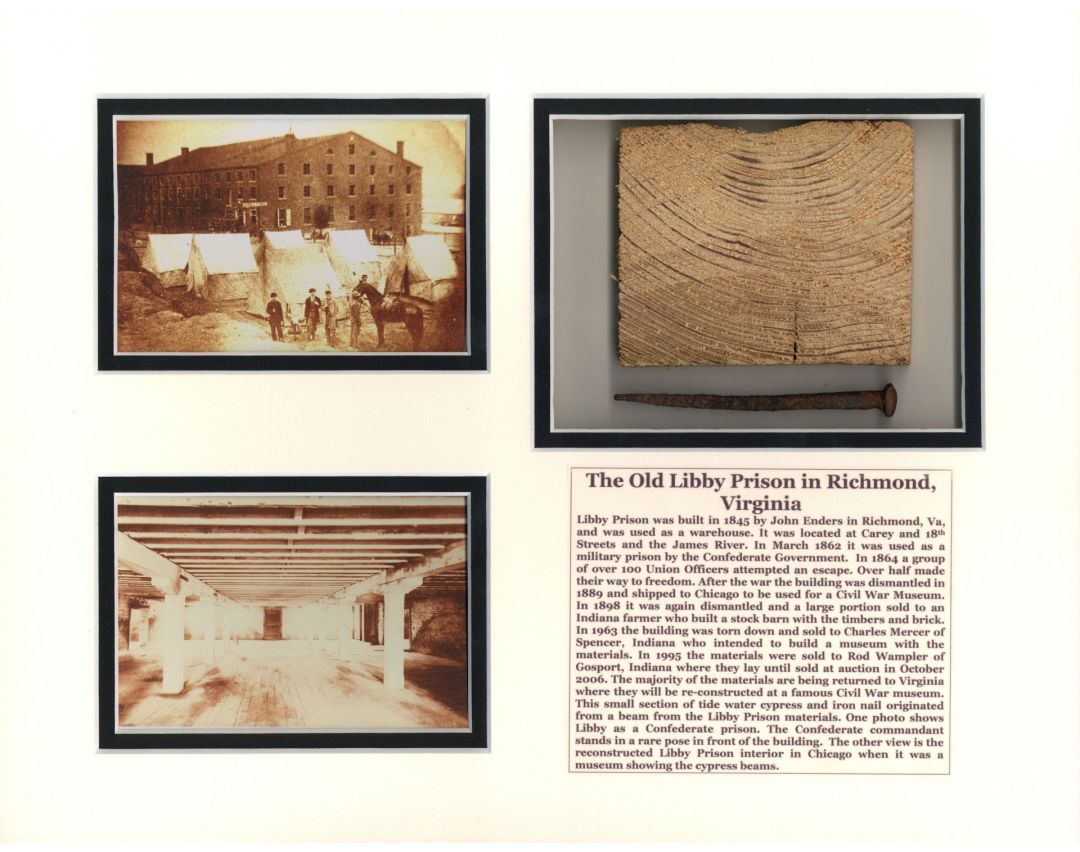Cypress and Nail from Old Libby Prison Relic - Stood in Two Locations during It's Existence From 1845-1899
Inv# AM1170Libby Prison, constructed in 1845 by John Enders in Richmond, Virginia, initially served as a warehouse. It was situated at the intersection of Carey and 18th Streets, adjacent to the James River. In March 1862, the Confederate Government repurposed it as a military prison. In 1864, a significant escape attempt involving over 100 Union officers took place, with more than half successfully reaching freedom. Following the conclusion of the Civil War, the structure was dismantled in 1889 and transported to Chicago for use in a Civil War Museum. In 1898, it was taken apart once more, with a substantial portion sold to a farmer in Indiana, who utilized the materials to construct a stock barn. In 1963, the remnants of the building were demolished and acquired by Charles Mercer of Spencer, Indiana, who planned to create a museum from the salvaged materials. In 1995, these materials were sold to Rod Wampler of Gosport, Indiana, where they remained until being auctioned in October 2006. The majority of the materials are set to be returned to Virginia for reconstruction at a prominent Civil War museum.
Libby Prison served as a Confederate detention facility located in Richmond, Virginia, during the American Civil War. Established in 1862, it was designated to accommodate Union Army officers captured during various engagements, particularly the nearby Seven Days battles, which resulted in approximately 16,000 Union casualties—killed, wounded, or captured—between June 25 and July 1. This facility was part of the Union's Peninsular campaign aimed at capturing Richmond and swiftly concluding the war, which had commenced only a year prior. As the war progressed, Libby Prison became notorious for its overcrowded and brutal conditions, leading to significant mortality rates among inmates due to disease and malnutrition. By 1863, around one thousand prisoners were crammed into large, open rooms across two floors, with barred windows that left them vulnerable to the elements and extreme temperatures. Originally constructed as a tobacco warehouse before the war, the building later served as a storage facility for food and groceries before its conversion into a prison. In 1889, Charles F. Gunther relocated the structure to Chicago, where it was transformed into a war museum. A decade later, the Coliseum Company disassembled the building and sold its components as memorabilia.











Ebay ID: labarre_galleries